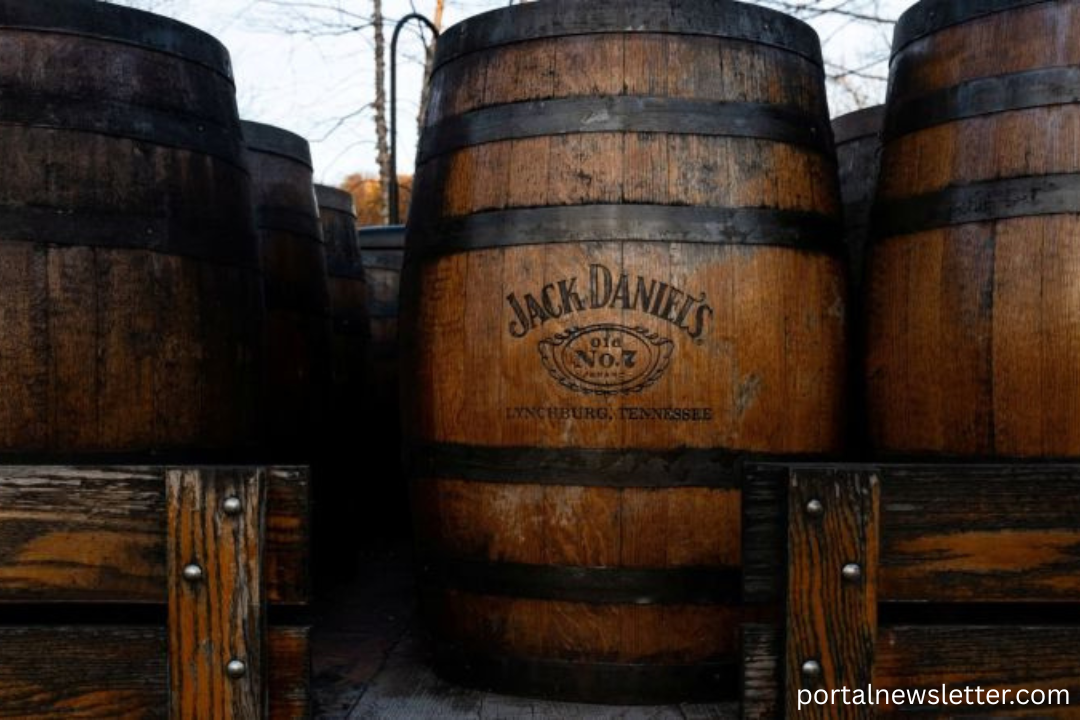Liquor exports from the United States have reached unprecedented levels in 2024, signaling a strong comeback for the industry. The American liquor market, known for its premium whiskey, bourbon, vodka, and other spirits, has enjoyed a resurgence on the global stage. This surge is fueled by changing global trade policies, tariff adjustments, rising international demand, and clever marketing by American distillers. As the world embraces American liquor with new enthusiasm, the economic benefits are rippling across the industry, creating opportunities and challenges alike.
Growth of the American Liquor Industry in 2024
American liquor producers have seen remarkable growth in 2024, mainly driven by the reopening of global markets and increasing consumer demand for high-quality spirits. Major brands and smaller craft distilleries alike have taken advantage of new opportunities to expand into international markets.
The American liquor sector has a longstanding reputation for producing top-tier whiskey and bourbon. Still, in recent years, vodka, rum, and tequila made in the U.S. have also gained popularity. This diversification has helped American liquor exports break previous records and tap into growing markets in Asia, Europe, and Latin America.
Impact of Tariffs on Liquor Exports
One major factor influencing the rise in liquor exports has been the adjustment of international tariffs. In the past, retaliatory tariffs imposed by key trading partners had slowed down American liquor shipments abroad. However, in 2024, many of these tariffs were reduced or eliminated through new trade agreements.
Reduced tariffs have made American liquor more competitively priced on global shelves. This advantage has enabled U.S. distillers to regain market share in countries like China, the United Kingdom, Germany, and Japan. Liquor exports have not only recovered from previous losses but have surpassed all earlier records.
The new tariff environment has also encouraged partnerships between American liquor brands and foreign distributors, streamlining the supply chain and making it easier to penetrate international markets.
Key Markets for American Liquor Exports
Several international markets have been crucial to the surge in American liquor exports in 2024:
Europe
European countries, notably the United Kingdom, France, and Germany, have shown a renewed appetite for American liquor. Bourbon and Tennessee whiskey are especially popular, appealing to European consumers who appreciate their distinctive flavors and heritage.
Asia
In Asia, rising disposable incomes and an interest in Western luxury goods have boosted demand for American liquor. Japan and South Korea, with their longstanding appreciation for whiskey, have embraced new American brands, while China’s growing middle class is becoming a significant market for premium American spirits.
Latin America
Latin American markets, especially Mexico and Brazil, have increased imports of American liquor, aided by favorable trade agreements and cultural ties that support the popularity of American brands.
Factors Driving Increased Liquor Demand Globally
Several trends are pushing global demand for American liquor:
Premiumization of Spirits
Around the world, consumers are shifting toward premium and ultra-premium liquor products. American distilleries have capitalized on this trend by offering high-end whiskey, bourbon, and craft spirits that cater to sophisticated palates.
Craft Distilling Movement
The rise of craft distilling has added a fresh dynamic to American liquor exports. International consumers are increasingly interested in small-batch, artisanal spirits with unique flavor profiles and stories behind them. Craft distillers are finding enthusiastic audiences abroad who are eager for something different.
Cultural Influence
American culture, fueled by music, movies, and social media, continues to shape global trends. Iconic images of American liquor in popular culture help drive international interest and loyalty toward U.S. brands.
E-commerce Expansion
Online retail platforms have made it easier for international consumers to purchase American liquor. E-commerce growth has expanded market access and brand visibility, allowing even smaller distilleries to reach global audiences.
Challenges Facing Liquor Exporters
Despite the successes of 2024, American liquor exporters still face some challenges:
Regulatory Barriers
Different countries impose varied labeling, packaging, and alcohol content regulations, complicating the export process for liquor producers. Adapting to these rules can be costly and time-consuming.
Supply Chain Disruptions
Global supply chains are still recovering from the disruptions of the past few years. Logistics costs remain high in some regions, and bottlenecks at ports can delay shipments, impacting the flow of American liquor to overseas markets.
Competition from Other Countries
While American liquor enjoys strong brand recognition, competition from Scotch whisky, Irish whiskey, Japanese whisky, and other international spirits remains fierce. Maintaining a competitive edge requires constant innovation and strategic marketing.
Strategies American Liquor Brands Are Using to Expand Globally
To maintain momentum in 2024 and beyond, American liquor producers are adopting several strategies:
Focus on Storytelling
Brands are highlighting the heritage, craftsmanship, and unique characteristics of their liquor. Storytelling resonates with international consumers who value authenticity and tradition.
Investment in Sustainability
Sustainability initiatives, such as eco-friendly packaging and sustainable sourcing of ingredients, are becoming essential selling points. Environmentally conscious consumers are more likely to support brands that align with their values.
Diversification of Products
By introducing new flavors, limited editions, and innovative packaging, American liquor companies are keeping their offerings fresh and appealing to diverse markets.
Strengthening Distribution Networks
Building strong relationships with local distributors and leveraging online platforms allows American liquor brands to maintain a consistent presence in international markets.
The Economic Impact of Liquor Exports

The surge in American liquor exports has significant economic implications:
- Job Creation: Growth in the liquor export sector supports jobs not only at distilleries but also in agriculture, logistics, marketing, and hospitality.
- State Revenues: Many states benefit from taxes and licensing fees related to liquor production and export.
- Brand Building: Successful exports enhance the global reputation of American brands, making them more competitive in other industries as well.
The liquor industry’s success story in 2024 reflects broader trends in American manufacturing and agricultural exports, demonstrating resilience and adaptability in a changing global economy.
Frequently Asked Questions (FAQ’s)
What caused the surge in American liquor exports in 2024?
Reduced tariffs drove the surge in American liquor exports, increasing global demand for premium spirits, expanded e-commerce, and strategic marketing by U.S. distillers.
Which countries import the most American liquor?
Top importers of American liquor include the United Kingdom, Japan, China, Germany, and South Korea, where demand for whiskey and bourbon is robust.
How did tariffs impact liquor exports?
Reduced or eliminated tariffs in 2024 made American liquor more competitively priced in global markets, helping U.S. producers regain lost ground and boost exports.
What types of liquor are most popular internationally?
American whiskey, bourbon, vodka, and craft spirits are among the most popular liquors exported to international markets, appealing to a wide range of consumers.
How is the craft distilling movement influencing liquor exports?
Craft distillers are introducing unique, small-batch spirits that are gaining international popularity, helping to diversify American liquor exports beyond traditional brands.
Are there any challenges facing American liquor exporters?
Yes, exporters face regulatory differences, supply chain disruptions, and competition from established international brands like Scotch whisky and Japanese whisky.
How does e-commerce help liquor exports?
E-commerce platforms allow American liquor brands to reach global consumers directly, expanding their market reach and increasing sales without relying solely on traditional retail.
What is the economic impact of liquor exports on the U.S.?
The rise in liquor exports contributes to job creation, boosts state revenues through taxes and licensing, and enhances the international reputation of American products.
Conclusion
Liquor exports from the U.S. have hit historic highs in 2024, driven by favorable trade conditions, strong international demand, and strategic marketing by American producers. Despite challenges such as regulatory hurdles and global competition, American liquor brands have demonstrated remarkable resilience and innovation. As global consumers continue to seek premium, authentic spirits, American liquor is poised to maintain its strong momentum well into the future.
The success of American liquor exports not only boosts the industry itself but also strengthens the broader economy, enhances U.S. cultural influence, and supports a growing workforce. As distilleries look ahead to new opportunities and markets, the future of American liquor abroad has never been brighter.


